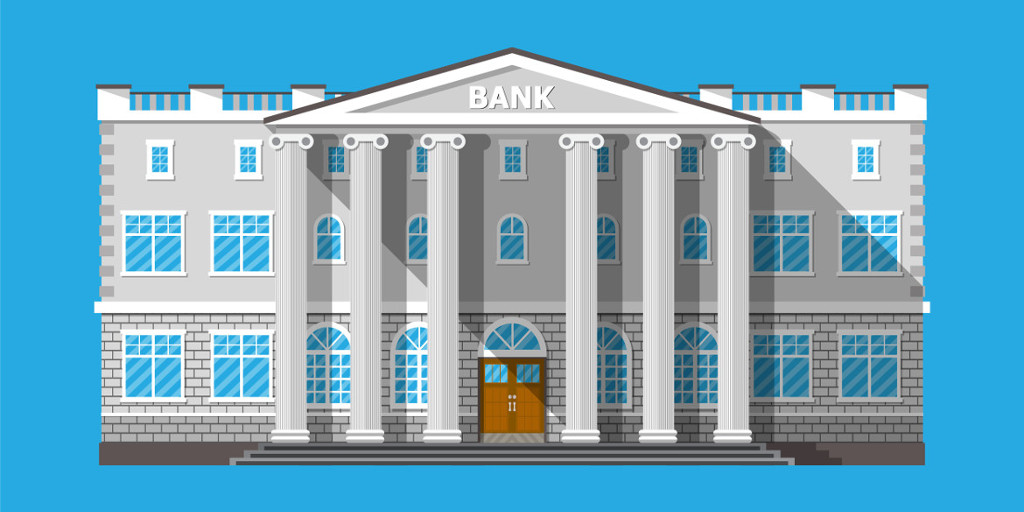At French bank BNP Paribas, chief executive Jean-Laurent Bonnafé is on a mission to build what he calls “the bank of the future”. He is clearly prepared to give his plan some serious financial backing: in February 2017 the bank announced that it would double its investment in financial services technology over the next three years to €3bn (US$3.35bn) to deliver three main goals: digital transformation, new customer experiences, and efficiency savings.
Other financial services leaders are thinking along similar lines, investing millions in digital transformation programmes even against a backdrop of low interest rates and squeezed profit margins. Last year Dutch bank ING pledged €800m over five years for its digital transformation programme, while Dubai-based Emirates NBD has earmarked Dh500m (US$136m) for its own three-year plan. Analysts at IT market research company IDC estimate that in 2015 spending on digital transformation by US retail banks alone amounted to some US$16.6bn and are forecasting that this sum will rise at a compound annual growth rate of 10.4% into 2019.
Elsewhere in the financial services industry the spending spree has been more muted, slowed by legacy systems and conservative cultures, but insurers and asset management firms are beginning to spell out their own ambitions, too.
At UK-based insurance company Aviva, group CEO Mark Wilson has stated that he wants the company to be a “320-year-old digital insurance disruptor” and is spending in the region of £100m (US$127m) a year in pursuit of that goal. The Wealth Management arm of Deutsche Bank, meanwhile, recently announced it is to invest US$65m in digital capabilities for the super-rich, such as online portfolio health checks.

Fear of disruption?
What lies behind the rush to invest in new financial services technologies is to some extent a fear of disruption—a concern that “fintech” start-ups and challenger banks, more adept at using new technologies, will offer more innovative, convenient ways of using financial services and lure away digitally savvy customers.
That, at least, has been the popular narrative. In recent times, however, a more nuanced picture has emerged. Established financial services have upped their spending on new technologies, while venture-capital firms have begun to rein in their investments in fintech start-ups. A May 2017 note to clients from equity analysts at investment bank Morgan Stanley suggests that this shift may lead to an environment in which incumbent financial services companies, not plucky upstarts, begin to “take the lead” on innovation investments.
Either way, there’s a widespread agreement that the winners will be decided by customers themselves, who care less about the technology underpinning their interactions with a financial services provider and more about the experience itself.
“I don’t see disruption coming from technology per se. It comes instead from the adoption and use of that technology by people in their everyday lives and businesses in their everyday operations,” says Marc Lien, director of innovation and digital development at Lloyds Bank, which in 2015 committed to spending £1bn on its digital capabilities by the end of this year.
“Disruption is not a point event. It is an ongoing process and becomes more noticeable when the adoption has reached scale,” he says.
That said, delivering disruption in the form of a better, more convenient service to customers will still owe much to the smart deployment by financial services firms of sophisticated new technologies at the back end. And in the process they are hoping to achieve significant efficiency savings internally. That €3bn programme of change at BNP Paribas, for example, is expected to deliver €3.4bn in cumulative cost savings by 2020 and €2.7bn of recurrent cost savings thereafter.
In these respects, four key technologies stand out as potential disruptors of financial services: biometrics; blockchain; cognitive computing; and open banking.
 Biometrics
Biometrics
At a time when customers are already overburdened with multiple passwords and PIN codes to remember for their online accounts, biometrics—the use of unique physical features such as fingerprint/iris scans or voice identification to authenticate a transaction—may offer a more secure and more convenient alternative to passwords. In Japan and Brazil, biometric ATMs [automatic teller machines] which scan palms or fingers are already widely used. In other regions there have been concerns over storing customers’ biometric data, but that is changing as a result of customer demand for convenience and technology advances.
While Motorola may have been the first smartphone company to introduce fingerprint recognition on a smartphone in 2011, it wasn’t until the launch of Apple’s 5S phone in 2013, with Touch ID, that the technology really took off. Today, several banks offer Apple Touch ID as an option for customers to access their bank account from their iPhone, including Lloyds, Bank of America and Rabobank. In addition to Touch ID, HSBC/First Direct has also rolled out voice biometrics technology to its phone banking customers, which works by cross-checking against 100 unique identifiers, including both “behavioural” voice features such as speed, cadence and pronunciation, and physical aspects, including the shape of the larynx, vocal tract and nasal passages.
Mastercard, meanwhile, is rolling out “selfie pay”, or Identity Check Mobile, across Europe. This uses facial recognition to allow smartphone users making a purchase to authenticate their identities by taking a photo of themselves. As the cameras, microphones and fingerprint scanners of mobile phones become increasingly more sophisticated, it seems likely that biometrics will be used by consumers to access a wide range of financial services.
Blockchain
Although relatively new and untested, blockchain technology is widely hailed as the future of transaction processing in financial services. Used to create tamper-proof, cryptographically secure distributed ledgers to record transactions, it’s a faster and more cost-effective alternative to the traditional clearing and settlement mechanisms on which financial services companies have traditionally relied. With blockchain, a record of every transaction in which value or ownership is transferred is represented as a “block” of data containing basic information—sender, receiver, date/time, asset type, value and quantity. These data are stored on a network of computers, rather than a centralised server. Each new block is linked directly to the one that preceded it using advanced cryptography, in a “chain” that stretches back to the very first block. No block can be deleted or changed.
This process potentially offers huge time and cost savings in banking, insurance and asset management. It’s been suggested, for example, that it could eliminate the back-and-forth that goes on between reinsurers and insurers until they agree on a claim. With that in mind, the Blockchain Insurance Initiative (B3i) was launched in October 2016 by the world’s two largest reinsurers, Munich Re and Swiss Re, along with insurers Aegon, Allianz and Zurich. In trade finance, it might be used to track the ownership of goods that change hands several times while in transit from their countries of origin.
In January 2017 seven banks—Deutsche Bank, HSBC, KBC, Natixis, Rabobank, Société Générale and UniCredit—announced they were collaborating on a crossborder trade finance platform based on blockchain, called Digital Trade Chain (DTC). In time, blockchain could extend to more consumer-focused activities that involve a heavy burden of information and document exchange between multiple parties, from buying a home to settling a car insurance claim.
Cognitive computing
The term “cognitive computing” is a broad one but generally refers to the application of techniques such machine learning, predictive analytics and speech recognition that mimic the functioning of the human brain. In other words, it’s the key to using machines to make the decisions that humans make today, using sophisticated number-crunching of so-called “big data” and the widespread availability of low-cost computing power, often based in the cloud. These tasks include predicting default rates on loans, calculating insurance premiums and ensuring compliance with industry regulations (in an approach referred to as “regtech”).
In asset management, cognitive computing also underpins “‘robo-advisors”, machines which advise customers on the investment options likely to bring them the best returns given the customers’ stated preferences (eg, appetite for risk, time horizon, and specific financial goals). Robo-advisors offer highly personalised advice based on these parameters and the level of funds at the customer’s disposal. It is widely used to power the “chatbots” which assist retail banking customers with basic enquiries and requests, from checking balances to registering changes of address.
This trend of robotic process automation, or RPA, could be bad news for the humans who perform these tasks today: as many as 1.7m banking jobs in the US and Europe could be lost to automation over the next decade, according to a report last year from US-based Citigroup. But for financial services companies dogged by low margins, it’s a big opportunity for efficiency gains. In September 2016 Mumbai-based ICICI Bank announced that it had already automated 200 business processes using “software robotics” in areas including retail banking, trade finance, foreign exchange and treasury services, adding that it had plans to take this number to 500 by the end of its fiscal year in March 2017.
Open banking
Unlike the optional adoption of these technologies, the move to open banking is set to become mandatory for financial services companies in Europe. With the introduction of the EU’s Payment Services Directive (PSD2) in January 2018, banks will need to give other financial services and information providers access to their customers’ online accounts through open APIs [application programming interfaces] when those account holders have given their consent. The aims are to increase competition, improve customer service, and promote the development of new online and mobile payment systems. The idea is that incumbent banks will move away from providing “one-stop shops” for financial services and instead offer “open platforms”, from which customers can access apps and services from other companies, too.
The use of APIs to allow third-party developers to access a bank’s data on products and customers will enable them to create new apps to provide price comparisons on loan rates, help customers manage their spending habits better, or enable a mortgage provider to view customers’ transaction history. It will also enable third parties to initiate payments. In practice, this will require retail banks to develop a set of documentation, development code and implementation guidance for these third-party developers to use, dramatically bringing down entry barriers for participation in financial services. “There’s a basic will and desire in Brussels to encourage fintech companies, and fintech innovation and PSD2 is broadly a reflection of that,” says William Echikson, associate senior research fellow and head of the digital forum at the Centre for European Policy Studies, a Brussels-based think-tank. But it will also require financial services companies of all types to address tricky security concerns around authentication and authorisation that a more open banking environment will create, he adds.
Big changes ahead
All this points to a financial services environment that is likely to look very different by 2030. As the distinction between finance and technology increasingly blurs, established financial services companies will face formidable new competition. And it is not just start-ups that they will need to hold at bay. Silicon Valley-based technology giants such as Google, Apple and Facebook all have their sights set on a slice of the financial services business, too. While these companies have broadly remained on the fringes of financial services, leery of regulation, their work in areas such as mobile wallets, along with their spending power, suggests more serious incursions may be in the offing.
“Some things will be constant,” says Mr Lien at Lloyds Bank. “Even by 2030, people’s fundamental financial needs will not change: they will still want to save for the future, borrow to support purchases, transfer money and protect their families.” But, he concedes, “how these needs are met will be profoundly different.”
Addressing technological disruption will require huge investment, at a time when many financial services companies are already under strain. Widespread consolidation, as banks acquire not just fintechs but also weaker banks, looks set to be the pattern for the next decade or so. The survivors will be those companies that manage to win at both consolidation and at riding the technological disruption wave.








